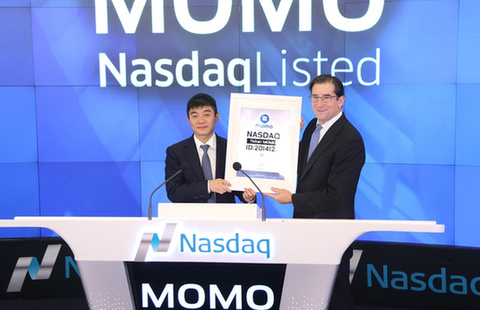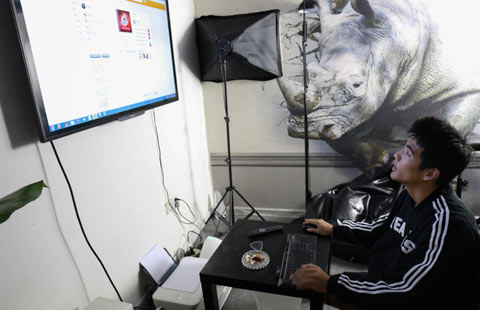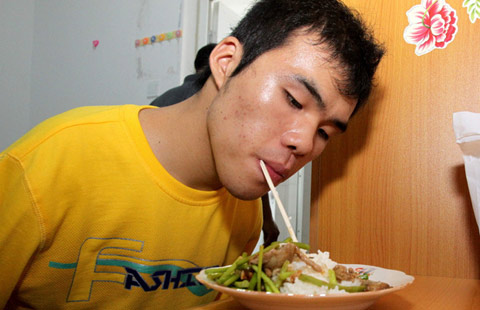Relax high-tech restrictions
By Zhang Monan (China Daily) Updated: 2012-05-08 11:06Outdated US ban on exports to China hurts both countries and should be changed as soon as possible
Despite the progress made in relations at the just-concluded fourth round of the China-US Strategic and Economic Dialogue, there has been little indication that the United States intends to relax its restrictions on high-tech exports to China.
After the eruption of the global financial crisis, the US government made some changes to its decades-long export restriction system in a bid to boost its slowed exports. In 2009, the US Department of Commerce published an amendment draft on the policies of US exports to 64 countries or regions. But it excluded China, one of the largest trading partners of the US.
Unfortunately, the US has still not changed its biased approach toward technological exports to China.
Ending the restrictions and allowing unimpeded technology transfer to China would not only resolve the Sino-US trade imbalance, it would also lay the foundation for a new type of relationship between the two powers based on strategic mutual trust and economic reciprocity.
The US' high-tech restrictions are a double-edged sword. With numerous restrictive measures in place, the US has succeeded in preventing the export of some military technologies to China, but these restrictions have also hampered the export of its civilian technologies to China and seriously affected the otherwise booming high-tech cooperation between their enterprises, a leading contributor to widening trade deficit on the US side.
Statistics from China's Ministry of Commerce indicate that the value of China's high-tech imports increased from 56 billion yuan ($8.88 billion) in 2001 to 463 billion yuan in 2011, with an annual per capita growth rate of 23.5 percent. However, the proportion of high-tech imports from the US kept declining during the same period, from 16.7 percent in 2001 to 6.3 percent in 2011.
According to estimates, the year-on-year growth rate of China's high-tech imports will range from 20 percent to 40 percent over the next 10 years. That means that the US' high-tech export to China will reach $60 billion if it suspends its export restrictions and manages to maintain a 18.3 percent share of China's high-tech imports.
By imposing strict restrictions on high-tech exports to China, the US has not only contravened the world's principles on the spreading of technologies, it is also shackling its own technological development.
The US will need to accelerate its technological transfers and input more into the research and development of new technologies if it wants to maintain its leading status in the world's high-tech fields.
The US' restrictions on high-tech exports to China originated during the Cold War and various circles in the US realize that they are now a handicap to the US' efforts to re-industrialize.
Despite its long dominant status at the world's high-end manufacturing chain, the US has encountered numerous obstacles in its efforts to return to real economic development. Instead of simply recapturing its lost low-end manufacturing it is promoting re-industrialization through new technologies and high-tech exports.
China is one of the US' top trading partners and its enormous market will play an important role in helping the Obama administration attain its ambitious goal of doubling exports to $3 trillion by 2015 from the $1.5 trillion of 2009.
China and the US are complementary in industrial development. With traditional manufacturing and processing industries still dominating its economy, China still needs to import technologies to promote its industrial structural adjustment, improve its production efficiency and quality.
The US' matured industrial technologies are expected to play a big role in China's ongoing efforts to accelerate the transformation of its economic development mode, optimize its economic structure and promote a balanced and coordinated economic development among its different regions.
But in addition to high-tech imports, China should also try to sharpen its self-innovation capabilities in a bid to pursue sustainable development of its fast-growing economy.
The author is an economics researcher with the State Information Center.
- China to improve livelihood of low-income people
- China, Russia agree to co-op in developing Far East
- Chinese, Serbian airlines close to codeshare deal
- China maintains prudent monetary policy for 2015
- UK launches simplified biz visa scheme for Chinese
- China's constructor buys Aussie John Holland
- Highlights of China's Central Economic Work Conference
- Voith geared up for the long haul in China
















